Coffee Glossary: The Complete A-Z Guide
Ollie | February 24, 2023

Looking to dive deep into the world of coffee? You’ve landed at the right place — because this complete A-Z coffee glossary teaches you all there is to know about the world’s favourite bean. Covering beans, blends and brewing techniques; as well as roasting revelations and ridiculously tasty ways to enjoy your next cup.
Remember to bookmark this page for future use.
Coffee glossary A – Z Guide
Can you tell your mochas from your macchiatos; and your instant from your Specialty coffee? You will after reading this.
A

AA: This is the green bean grading most used in Africa. AA beans pass through a Grade 18 sieve (18/64-inch diameter) sieve perforation. They are too large to pass through Grade 16 (16/64″ diameter) sieve perforations. AA is equivalent to a ‘Supremo’ and ‘Superior grading’.
Note: ‘AAA’ refers to the largest bean size in Peru.
ACIDITY: After you drink your coffee, the feeling of sharpness left in your mouth is the acidity. Higher acidity tends to have a bright mouthfeel with citrus fruit flavours and aromas. Whereas a low acidity can feel rather flat.
AEROPRESS: The popular AeroPress is a small, manual immersion brewer made up of a plunger, brewing chamber, and a filter cap.
AFFOGATO: Traditionally known as “affogato al caffe”, affogato is an Italian coffee-based dessert. A scoop of vanilla ice cream ‘drowned’ (the Italian for ‘affogato’) with a shot of espresso. Delicious.
AGED COFFEE: As it sounds, aged coffee is stored away for many years. This reduces acidity and leaves a musty taste.
AGTRON: A spectrophotometer which measures the level of coffee bean roast. A scale from >25 extremely dark roast to >Light roast.
ALTURA: ‘Height’, in Spanish. Altura can describe coffee grown at altitude.
ALT-MILK: Alternative milk to dairy milk. Such as oat, almond, rice, hazelnut, hemp, macadamia, and coconut. Also called ‘plant-based’.
AMERICANO: The Americano consists of just hot water and espresso. The ratio of these ingredients is typically either 1/2 and 1/2 or 1/3 espresso and 2/3 water. Mostly enjoyed black, although some people do add milk.
ANAEROBIC FERMENTATION: When coffee is fermented in a low-oxygen environment. This helps microbial species develop and boost the flavour of the coffee.
ARABICA: Arabica is a type of coffee that makes up about 70% of the world’s coffee production. It is generally regarded as producing best tasting coffee.
AROMA: The fragrance that is produced by hot, freshly brewed coffee.
B
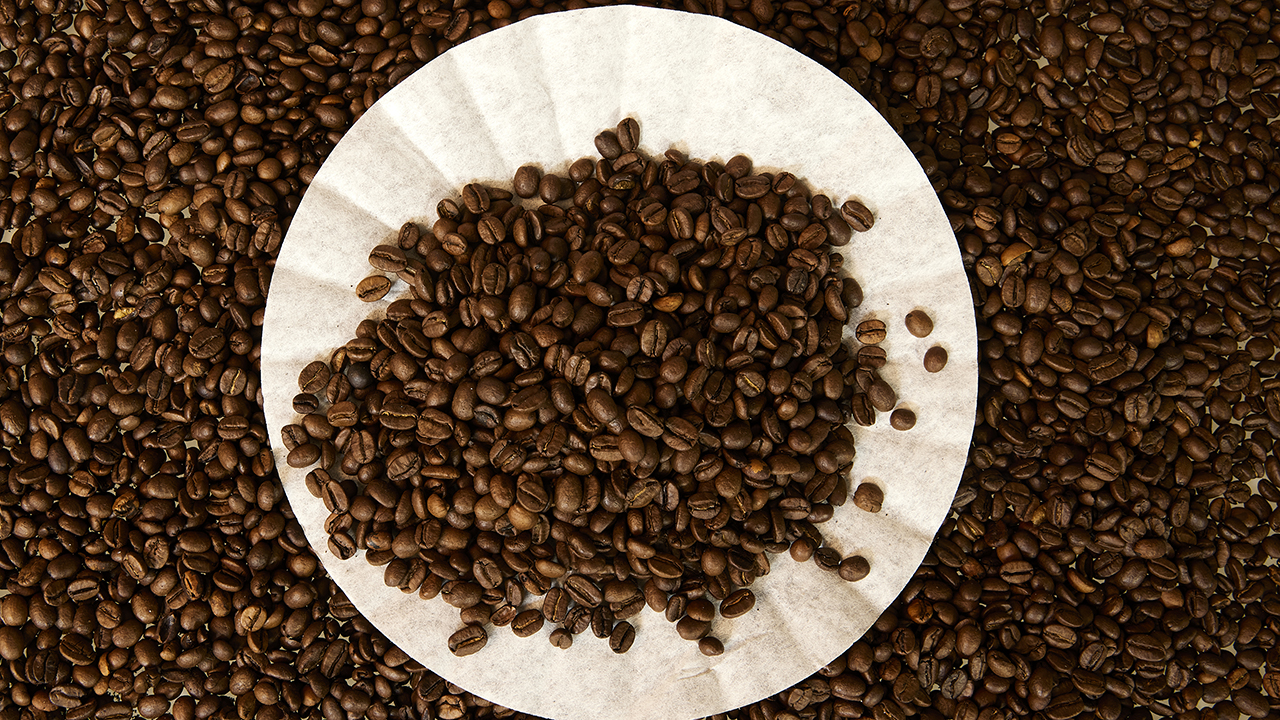
BARISTA: The Italian for ‘bartender’, a barista is a skilled coffee artist who serves all kinds of coffee in a bar or café.
Discover More: How to get barista-quality coffee in your office.
BEAN: Coffee is nothing without coffee beans. They come from the inside of coffee cherries and are grown within the ‘Bean Belt’ – the area around the equator between the Tropics of Capricorn and Cancer, between 23.5 degrees north and south latitude.
Discover More: Premium bean-to-cup coffee machines.
BENEFICIO: Meaning ‘profit’ in Spanish, a beneficio is a local coffee mill where harvested cherries are processed and sorted.
BITTERNESS: A natural part coffee, a bitter coffee has a sharp bite that can help us interpret the complexity of flavours.
BLADE GRINDER: A motorized machine that chops coffee beans. Much like a blender.
BLEND: A mixture of two or more single-origin coffees that produce a balanced coffee flavour. You can shop our coffee here.
BLOOM: The process of pouring a small amount of water over ground coffee to begin extraction – usually in pour-over brews.
BODY: The feel of your coffee in your mouth – how heavy or thick does it feel?
BREW RATIO: The ratio of water to coffee (in grams) used in coffee brewing. E.g. 17:1 if the water is 17 times the weight of coffee.
BREW TIME: The total length of time the coffee is in contact with water during brewing.
BRINY: A salty taste caused by under-extracting coffee.
BURR GRINDER: Two revolving burrs ground coffee in between them. Burr grinders (or ‘mills’) are flat or cone shaped.
C
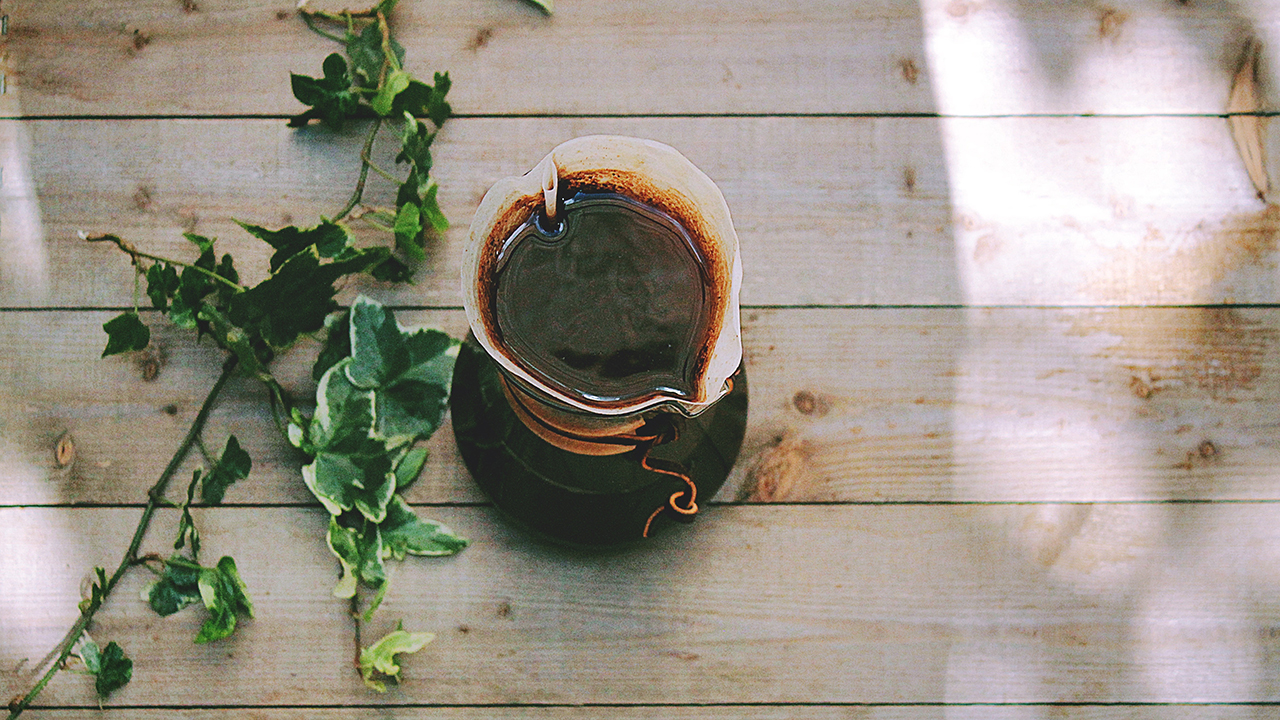
CAFÉ AU LAIT: French for ‘coffee with milk’, this is equal parts strong coffee (commonly drip coffee) and steamed milk.
CAFETIERE: Also known as French Press, this is coffee made by steeping grounds with hot water in a glass jug with a plunger.
CAFFEINE: The natural stimulant in coffee; caffeine releases dopamine and blocks adenosine: the neurotransmitter that signals tiredness to the brain.
Discover More: Happiness is a hot coffee in the morning
CAFFEOL: The coffee oil produced during roasting.
CAFFÉ CORRETTO: ‘Coffee correctly’ in Italian – this is espresso with alcohol: usually sambuca, grappa or brandy.
CAPPUCCINO: A cherished classic. An espresso shot combined with foamed steamed milk to make a smooth milky coffee.
CARAMELIZATION: A reaction involving sugars that occurs during coffee roasting. A caramelized sugar is less sweet, with more complex flavours and aromas.
CHEMEX: A coffee brewer. It uses coffee the pour-over method and paper filters – making a sweet and aromatic coffee.
CINNAMON ROAST: A very light (cinnamon-coloured) roast dropped on or just after first crack.
CITY ROAST: A medium roast between first crack and second crack.
CLOVER: A high-end coffee brewing machine that produces one cup at a time. An environmentally friendly option with no paper filters or grounds.
COFFEE CHERRY: Also known as coffee fruit or coffee berry, this small round fruit grows on coffee trees.
COFFEE MACHINE: Generic term for the machine that processes the coffee beans (or grounds) into a beverage. See examples of coffee machines from FreshGround.
COLD BREW: Cold and iced coffee from steeping coffee grounds in cold water for at least 12 hours.
COARSENESS: The texture of coffee grounds. Generally: larger grounds tend to be coarser (rough and bristly in texture).
CRACK: The audible crack sound made twice during the roasting process.
CULTIVAR: Can describe a coffee variety cultivated for commercial production.
CUP OF EXCELLENCE: A program for coffee farmers which ranks top-quality coffee and sells the winning coffees by auction.
CORTADO: Espresso topped with flat steamed milk originally from Spain.
CREMA: The thick, caramel-coloured foam that sits on top of an espresso.
CROP: Coffee harvested during the farming here. It’s usually roasted immediately after harvesting.
CUPPING: Also known as coffee tasting, this global and systematic method ranks quality coffees.
D
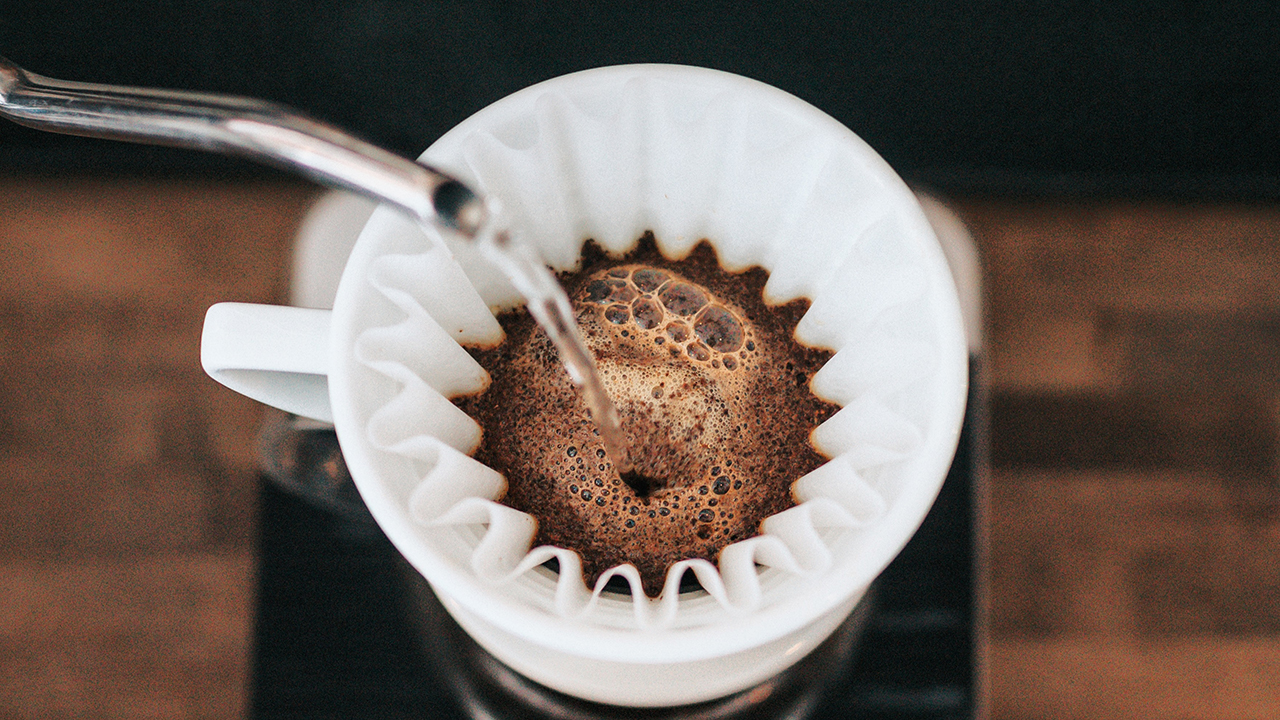
DARK ROAST: Coffee beans are roasted at least 430 °F, leaving a dark appearance and more bitter taste. An example is Ricco Fabio House Dark Roast.
DECAFFEINATED: Coffee minus the caffeine. The perfect office afternoon cup that guarantees the same taste with a good night’s sleep. An Example is Ricco Fabio House Decaf Roast.
DECANTER: Also called a beaker, this is simply a vessel used to decanter coffee that made hold sediment. A good tool for cold brew coffee.
DEMITASSE: ‘Half cup’ in French – a small cup used serve espresso.
DEGASSING: The release of gases from roasted coffee after the beans come out of the roaster.
DOPPIO: Italian for ‘double’, meaning a double coffee shot of espresso.
DOUBLE PICKED: Coffee that has been hand-picked twice to remove pebbles any other abnormalities.
DRIP COFFEE: When hot water passes through a cone holding filter paper and ground coffee, resulting drips which fill up your cup. Also called ‘pour-over coffee’.
DRY MILL: A place where parchment coffee is hulled, sorted, graded and packed for shipping.
E
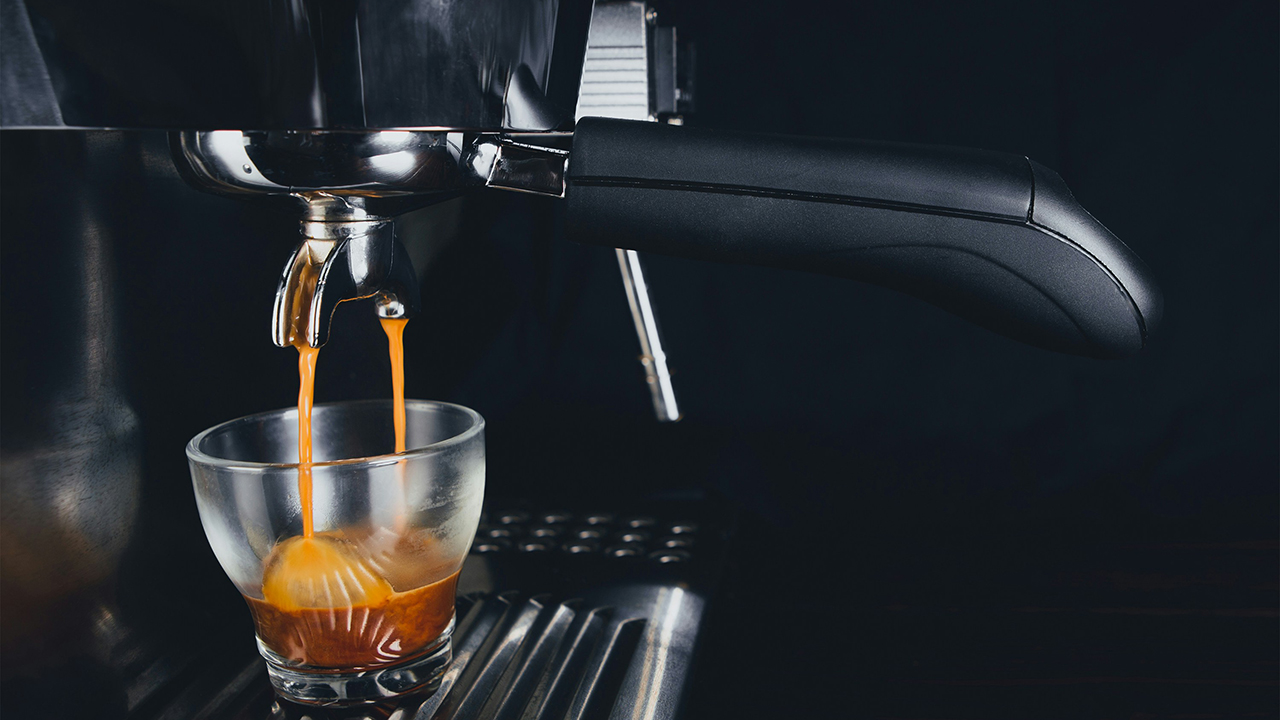
EARTHY: Coffee made with beans that have come in contact with the earth during the drying process give an ‘earthy’ taste.
ESPRESSO: Concentrated coffee that’s made when hot water is forced at pressure through fine coffee grounds made famous in Italy. A great choice of coffee that’ll help get you through the afternoon at work.
ESPRESSO ROMANO: An espresso shot with a slice of lemon.
ESTATE GROWN: A type of single-origin coffee usually from a massive farm or estate.
EXCELSO: Green bean grading used in South America (mostly Columbia). Excelso beans pass through a Grade 16 (18/64-inch diameter) sieve perforation, and are too large to fit through a Grade 14.
EXTRACTION: The process of drawing flavour from coffee grounds. If coffee is under-extracted it will taste sour and over-extracted coffee will taste bitter.
F
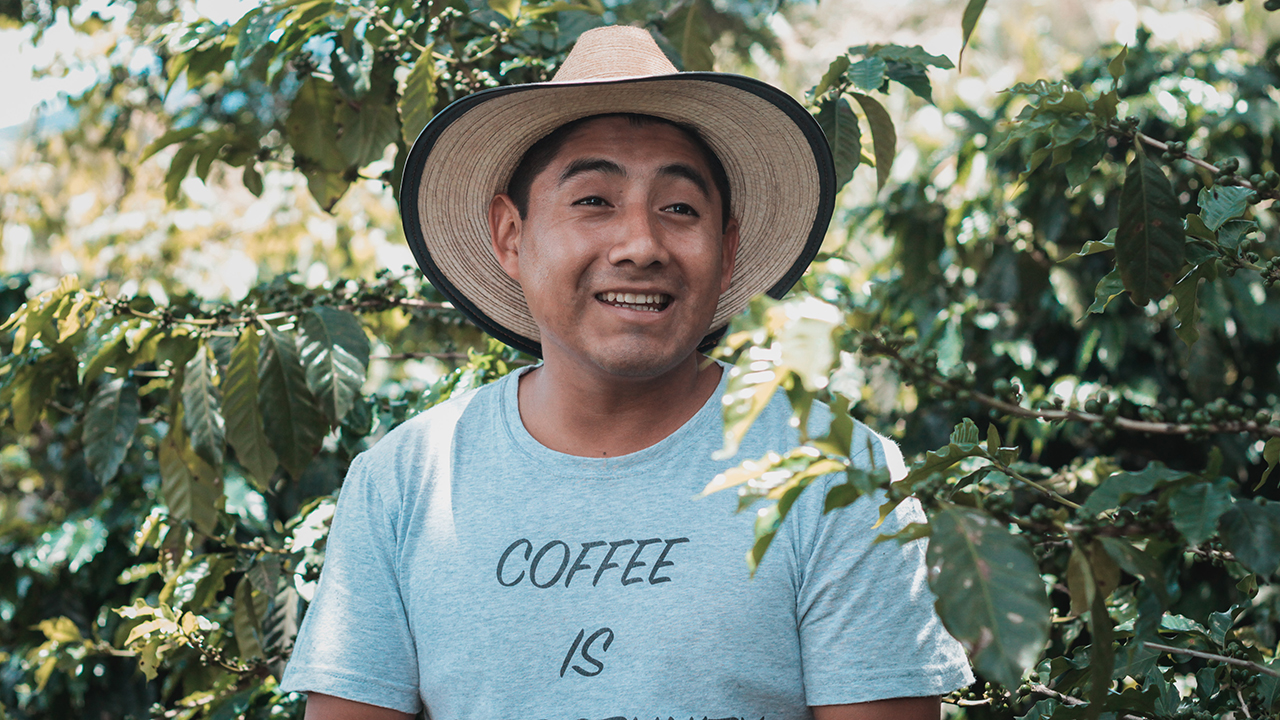
FAIRTRADE: Fairtrade certified coffee means environmental, economic and social standards, promoting better conditions for farmers.
FARMER: We wouldn’t be able to enjoy our morning cup without farmers — responsible for cultivating the crop.
FERMENTATION: A natural process by living microorganisms, this enables the bean’s seeds to produce sweetness and acidity when roasted.
FILTER COFFEE: Filter coffee is just coffee made with a cone lined with filter paper giving a sediment-free, smooth refreshing cup of delicious coffee. Examples of filter coffee can be found in our Ricco Fabio filter range.
FIRST CRACK: The crack sound from beans during roasting. At this point (about 385 °F), the beans increase in size as moisture is evaporated.
FLAVOUR: The distinctive taste of coffee: acidity, sweetness, spiciness, bitterness and saltiness are some examples.
FRAGRANCE: The scent of coffee when it is in its dry form is referred to as its fragrance, while its aroma is the odor it emits when it is wet or brewed.
FRAPPUCINO (‘Frappe’): A smooth, creamy and milky classic – blended coffee made with espresso, hot water, milk and ice. Topped with whipped cream, syrup and spices.
FRENCH ROAST: A very dark roast that has passed second crack.
FRENCH PRESS: A manual brewing method involves soaking ground coffee in hot water and then separating the grounds from the coffee by pressing down the filter. Also known as cafetière.
FROTHED MILK: Steaming milk froths it up and helps make that gorgeous art you get on your cappuccino or latte.
Discover More: Make milky coffees in the office with the F5 Egro Next.
FULL CITY ROAST: A roast that is quite dark, on the verge of second crack.
FLAT WHITE: A very popular espresso-based drink topped with steamed milk. Unusually about 40-60ml of espresso with 140-180ml of steam milk.
G
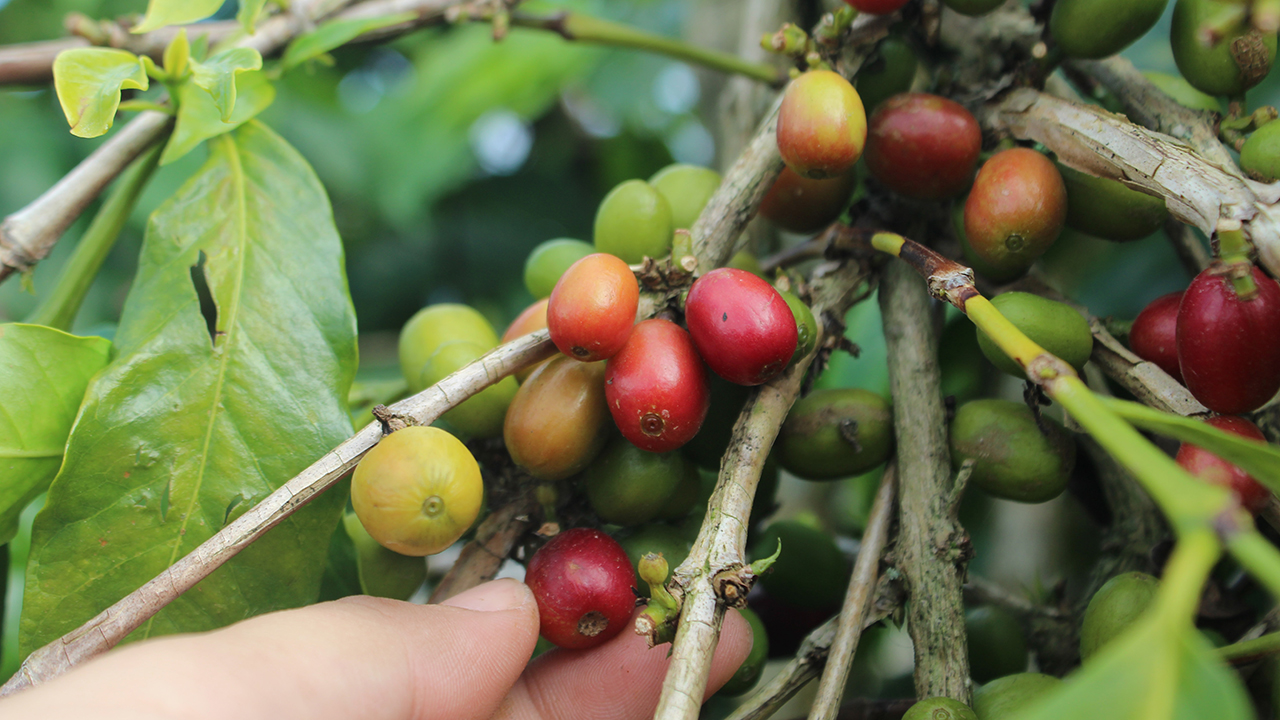
GILING BASAH: A coffee-processing method commonly seen in Indonesia. Whereby the coffee is hulled from its parchment before fully dried. This gives a full-bodied, earthy coffee.
GRADING: A coffee quality classification. Ranging from Grade 1 (Specialty Grade Coffee Beans) to Grade 5 (Off Grade Coffee Beans).
GREEN COFFEE: Coffee cherries that haven’t yet been roasted. Named for their green colour.
GRIND: Describes the way coffee beans are grinded. The size of the grind (from fine to coarse) affects taste of your coffee.
H
HEIRLOOM: Refers to a traditional variety of coffee that is indigenous to (or has been grown in) a specific region for a very long time.
HONEY PROCESS: Also called ‘pulped natural’, the coffee beans are squeezed from the cherry after harvest, then dried on patios or raised beds.
HULLING: The final step before storing at the dry mill where the green coffee bean is removed from the parchment shell.
HYBRID: A natural or artificial cross-breed of two different coffee plant species.
I
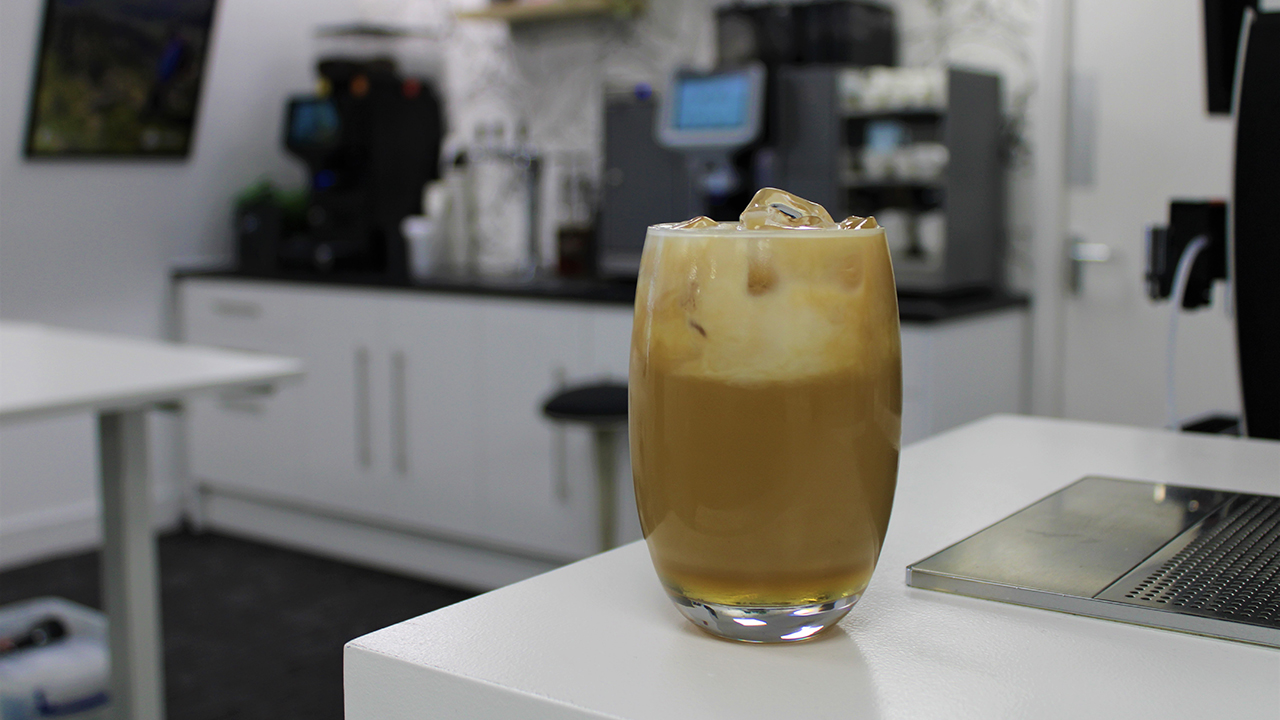
ICED COFFEE: As it sounds: coffee served cold with ice. A big refreshing favourite for a summer’s day. (Pictured above)
IMMERSION: Any manual brewing method where coffee grounds are immersed in water.
INSTANT COFFEE: Coffee powder or granules that instantly make coffee when hot water is poured onto them.
ITALIAN ROAST: An extremely dark roast that produces black, oily beans.
J
JAVA: Nickname for coffee (named after Java island in Indonesia, where it was grown in the 1600s).
K
KOPI: Black coffee with thick and sweetened condensed milk. Popular in Singapore.
L
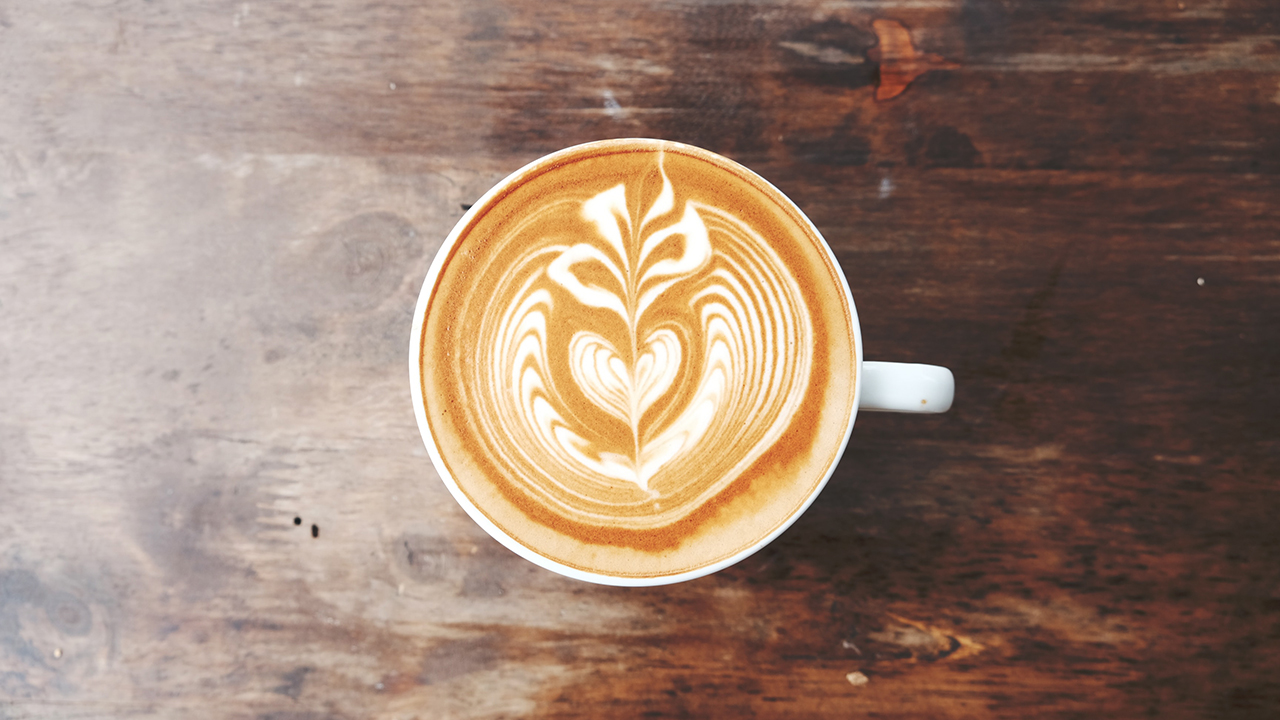
LATTE: A long, milky drink made with espresso with steamed milk originating from Italy. Perfect for creative latte art.
LEAF RUST: A rust-coloured fungus that attacks the coffee leaves and eventually kills them.
LIBERICA: Originating from the low-altitude regions for Malaysia and West Africa, Liberica accounts for 1% of global commercial coffee grown. It’s a big favourite in the Philippines.
LONG BLACK: Coffee made by pouring in hot water and adding espresso shot on top. Has a smaller crema layer than lungo.
LUNGO: Italian for ‘long’, lungo is made by pulling a Longer expresso shot (approximately 90-120ml). It has a fluffy crema on top.
M
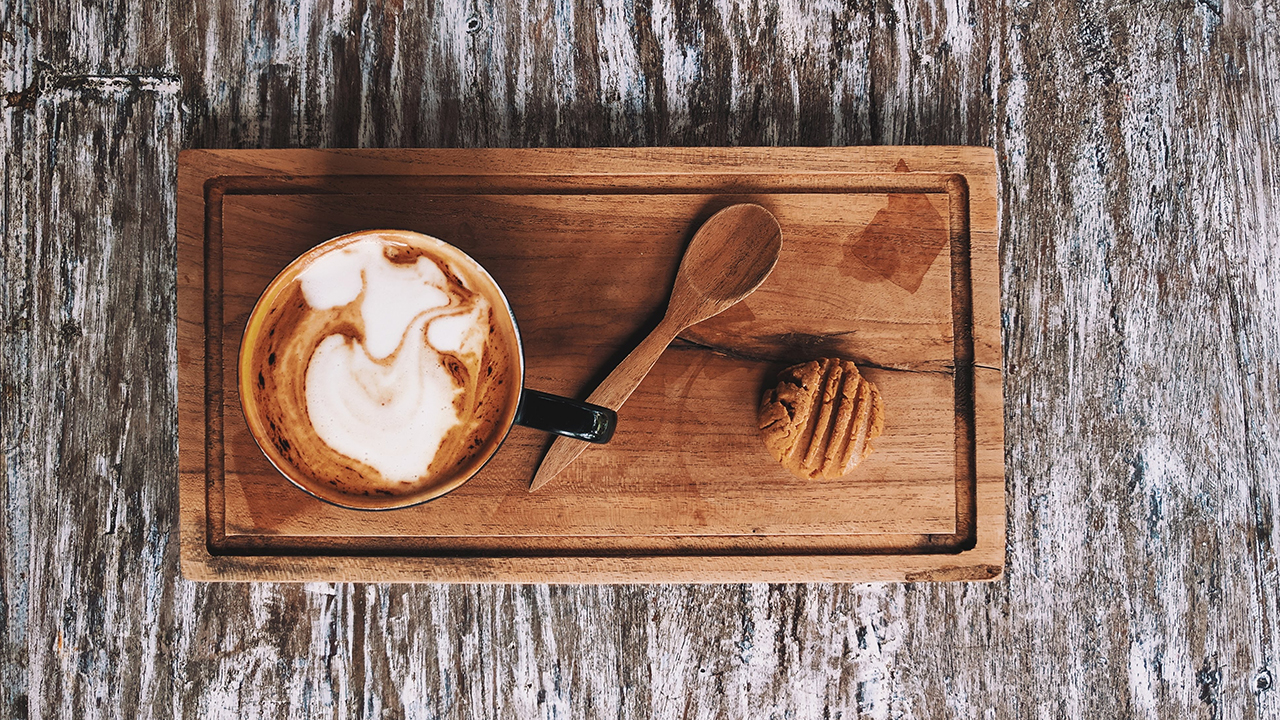
MACCHIATO: Espresso topped with just a very small amount of steamed milk.
MOKA: A Moka (pot) is a stove-top coffee-maker that produces a strong drink using steam-powered percolation.
MOKHA: A Yemeni trading port through which nearly all the world’s coffee has passed.
MOCHA: Mochaccino or mocha is a cross between a cappuccino and hot chocolate.
MONSOONING: A traditional method of ageing green coffee in India where the coffee is exposed to wet conditions for about three months, resulting in a loss of acidity.
MACHINE DRYING: Coffee dried using machines – usually rotating drums.
MAILLARD REACTION: The reaction during coffee roasting which gives coffee its brown colour and many of its flavours.
MOUTHFEEL: Describes how the coffee feels in your mouth. For example: silky, smooth, velvety, or rough.
MICROLOTS: A small selection (typically ten 60kg bags or less) from a specific bag or co-op.
MUCILAGE: The sticky layer of fruity material that surrounds the unprocessed coffee bean.
MUTATION: A coffee plant descended from a single variety plant, but deviates from the norm (in terms of height, leaf shape, disease resistance).
N
NATURAL COFFEE: When coffees are dried in the fruit. Also called traditional dried, dry-process, sun-dried or cherry-dried.
NITRO COFFEE: Cold brew coffee infused with nitrogen gas to produce a smooth texture. Found in supermarkets and vending machines.
O
ORIGIN: Where the coffee beans are sourced from. See single origin below.
ORGANIC COFFEE: Coffee made without artificial chemicals and additives with sustainable farming practices. See Rainforest Alliance below.
OVEREXTRACTION: When too much soluble material is captured during coffee brewing – making a bitter, harsh and flat cup. (An overlong brew time or too fine a grind is usually the cause).
P
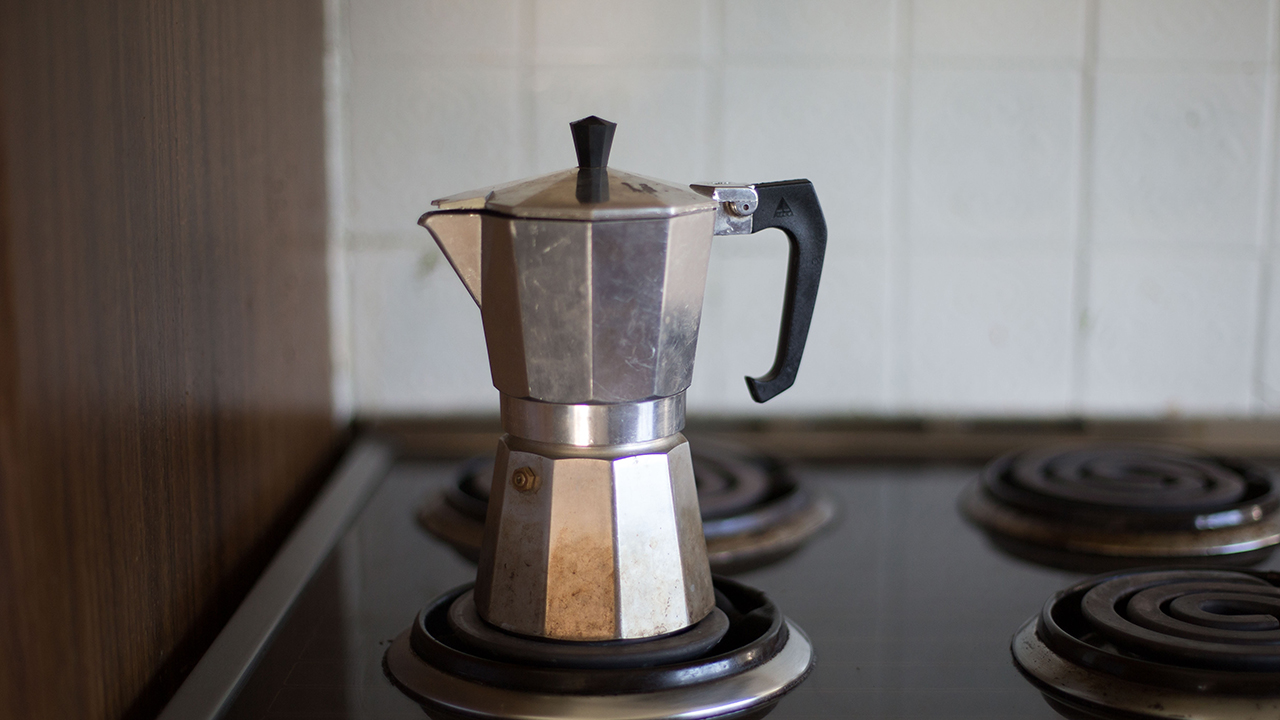
PARCHMENT: The protective shell that surrounds a coffee bean after wet-milling.
PEABERRY: A single (normally rounder) coffee seed that forms in a cherry in the place of two.
PERCOLATOR: A small pot for making coffee: boiling water passes through coffee beans into the container below. See percolate: the gradual filtration of water through coffee.
PICCOLO: A ristretto topped with milk and served in a small glass.
PLANT-BASED MILK: Delicious alternatives to diary milk. Oat, almond and soya are our particular favourites.
Discover More: Our guide to plant-based milks at work
POLISHING: Involves removing the silver skin from beans following hulling to improve their appearance.
PORTAFILTER: The handled part of a espresso or FreshGround coffee machine that holds the filter basket, into which ground coffee is placed. Also see “dose”: amount of espresso grounds used in portafilter.
PUCK: The round disc of coffee left in your portafilter after your espresso is pulled. Looks like a coffee puck!
PRE-INFUSION: The initial low-pressure burst of water applied by an espresso machine before proper high-pressure extraction happens.
PROCESSED: Refers to the removal and/or drying of the coffee cherry’s skin and fruit.
PULPED NATURAL: The coffee beans are squeezed out of the cherry after harvest. Then dried on patios with their mucilage intact.
PYROLYSIS: What causes caramelization during coffee roasting, 220°C heat causes a chemical change inside the bean, which releases carbon dioxide.
Q
Q-GRADER: A skilled professional who qualified to assess coffee quality with an SCA score out of 100. Anything over 80 is considered Specialty.
QUALITY: Coffee quality is classified by its overall flavour, acidity, body, aroma and tasting notes.
QUAKERS: Coffee beans don’t turn dark brown when roasted (they can’t be classified as Specialty Coffee if this is the case).
R
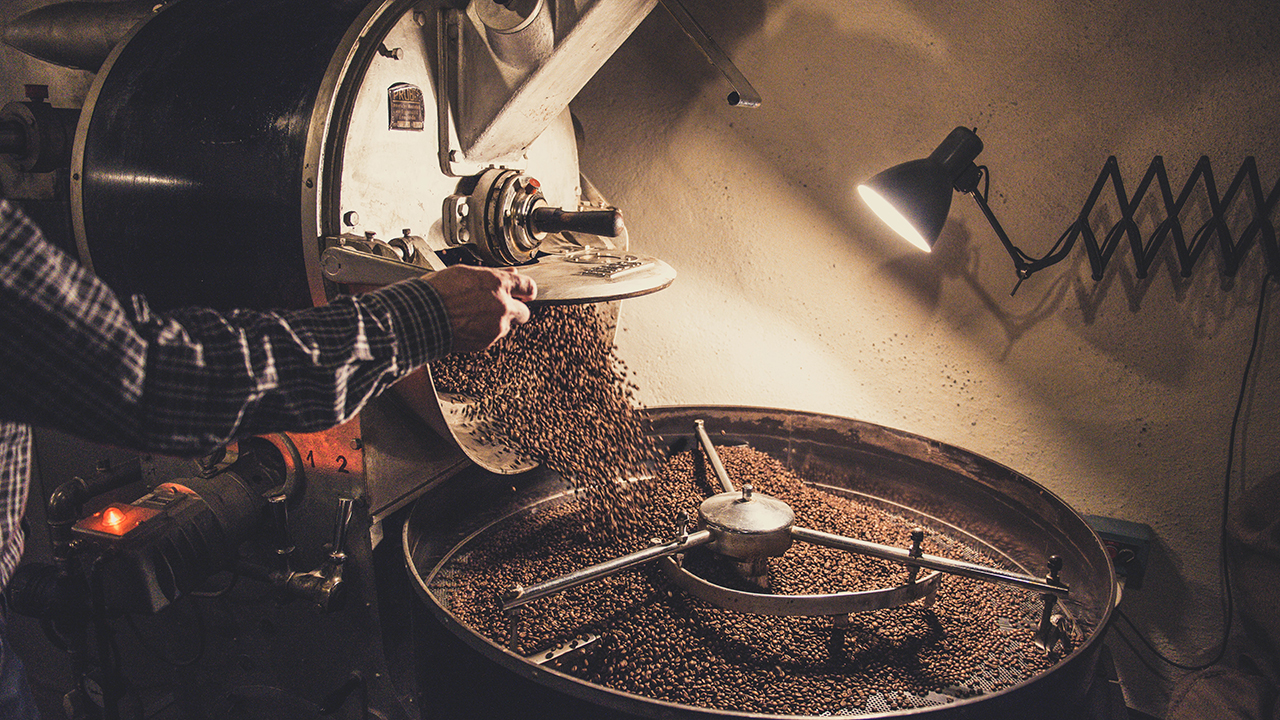
RAINFOREST ALLIANCE: An international non-profit organisation that focuses on business, agriculture, and forests – helping to make ethical and responsible business practices the new normal. FreshGround’s premium range of coffees has at least 30% content grown and harvested on Rainforest Alliance Certified™ farms.
RED EYE: Also called ‘shot in the dark’, a red eye is a regular drip brewed coffee with an extra espresso shot added.
RICH: Describes a coffee that is full in body, acidity and flavour.
RIPENESS: Coffee berries must be perfect ripeness when picked from their trees. Normally a dark red colour.
RISTRETTO: Espresso made with less water for a smaller, stronger coffee best served in a little demitasse cup.
ROBUSTA: Robusta Coffee is made from the beans of the Coffea canephora plant and is mostly grown in West Africa, Indonesia, Vietnam and other parts of Southeast Asia. It makes up around 30% of the world’s production. Read more the differences between Arabica and Robusta in in our blog.
ROASTING: The process of transforming a raw green coffee bean into a dark bean. The level of roast determines the taste. Roasting temperature ranges from 350 to 540 °F (175 to 282 °C).
ROTARY PUMP: A motor-powered rotor in espresso and commercial coffee machines used to move water through the coffee grounds.
S
SEASONAL COFFEE: See our winter drinks coffee recipes for inspiration.
SECOND CRACK: The cracking sound made by beans during their dark roast later stages.
SHADE GROWN COFFEE: Also called ‘Bird Friendly’, coffee crop grown in shade from rainforest or large plants. Usually Arabica (best grown in high altitude). This ripens the cherries slower, giving a more complex and flavourful result.
SHOT (espresso): A concentrated form of coffee. An espresso shot is 30-40ml liquid made from 7-9 grams of ground coffee.
SILVER SKIN: Thin layer covering the seeds inside the coffee ‘cherries’.
SINGLE ORIGIN: Coffee sourced from a particular country, region or farm.
SORTING: After beans are dried, they are hulled and sorted at a mill. The best coffees are sorted by: size for even roasting, density (the denser the more flavourful), and defects.
SPECIALTY COFFEE: Any coffee that scores above 80 points (out of 100) on the Specialty Coffee Association scale. It’s usually grown at high altitude.
STEAM WAND: A nozzle on the side of an espresso machine that inject pressurised air into milk, frothing it up so baristas can make lattes and cappuccinos.
STRICTLY HIGH GROWN (SHG): Coffee grown above 1,200 meters.
STRIP PICKING: Means all coffee cherries are picked from the tree at the same time, regardless of their differing ripeness levels.
SWEETNESS: Describes the sugary qualities of coffee – these are often crisp, chocolatey and citrus tastes.
SYPHON: A brewing method where air is removed. Syphon uses pressurized water vapour to extract coffee.
T
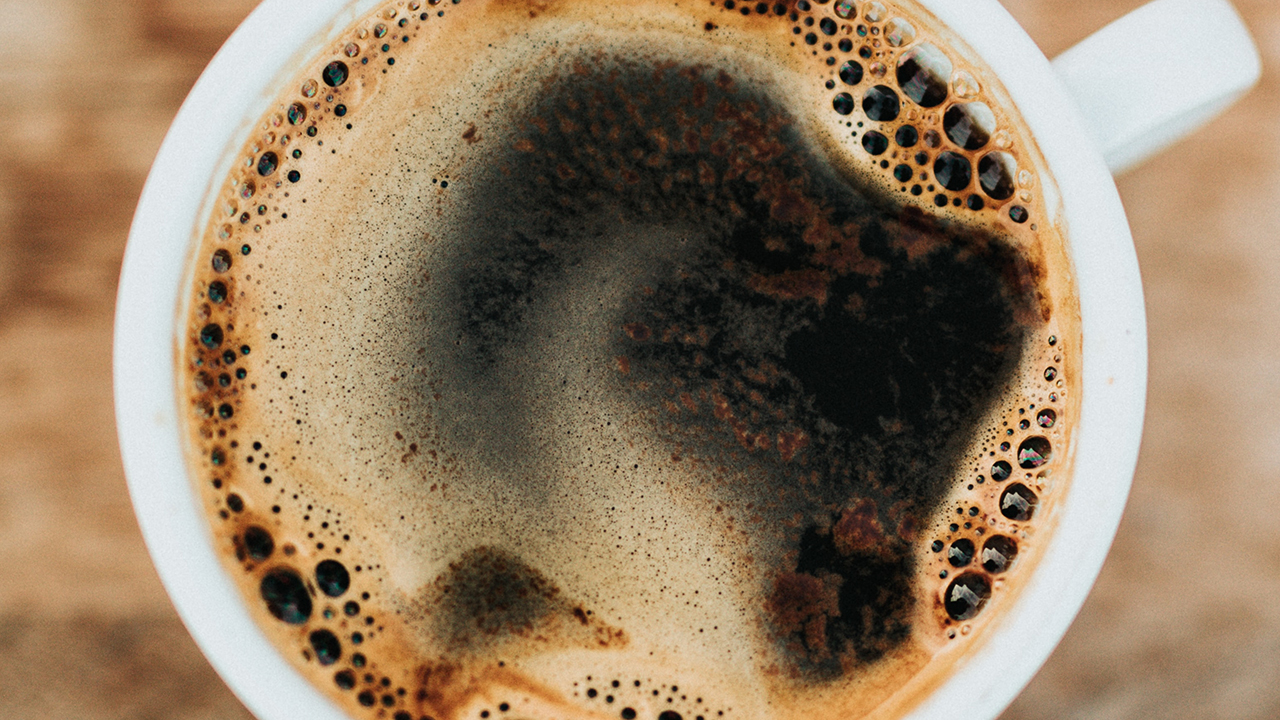
TASTING NOTES: Tastes from the coffee beans themselves. For example, lemon, grape, berries, chocolate, honey, green apples, jasmine, cedarwood, caramel, roasted nuts and more. See our coffee to discover the perfect tastes for your office.
TAMPING: A process in espresso brewing where the ground coffee is levelled and compacted in the portafilter basket using a tamper.
TERRIOR: Environment where coffee is grown; soil, topography and climate are major factors.
TIGER STRIPPING: Describes the colourful strips on surface of the coffee. Created by pulling an espresso shot with a bottomless portafilter.
TRIGONELLINE: A bitter compound that is lessens as the roast gets darker.
TURKISH COFFEE: A Turkish favourite. A thick, strong black coffee with fine grounds in it. Brewed by boiling in a cezve.
TYPICA: Varity of Arabica coffee, typica is rarely grown and produces excellent quality.
U
UNDER EXTRACTION: Refers to capturing too little soluble material during coffee brewing – creating a sharp, sour and weak cup.
V
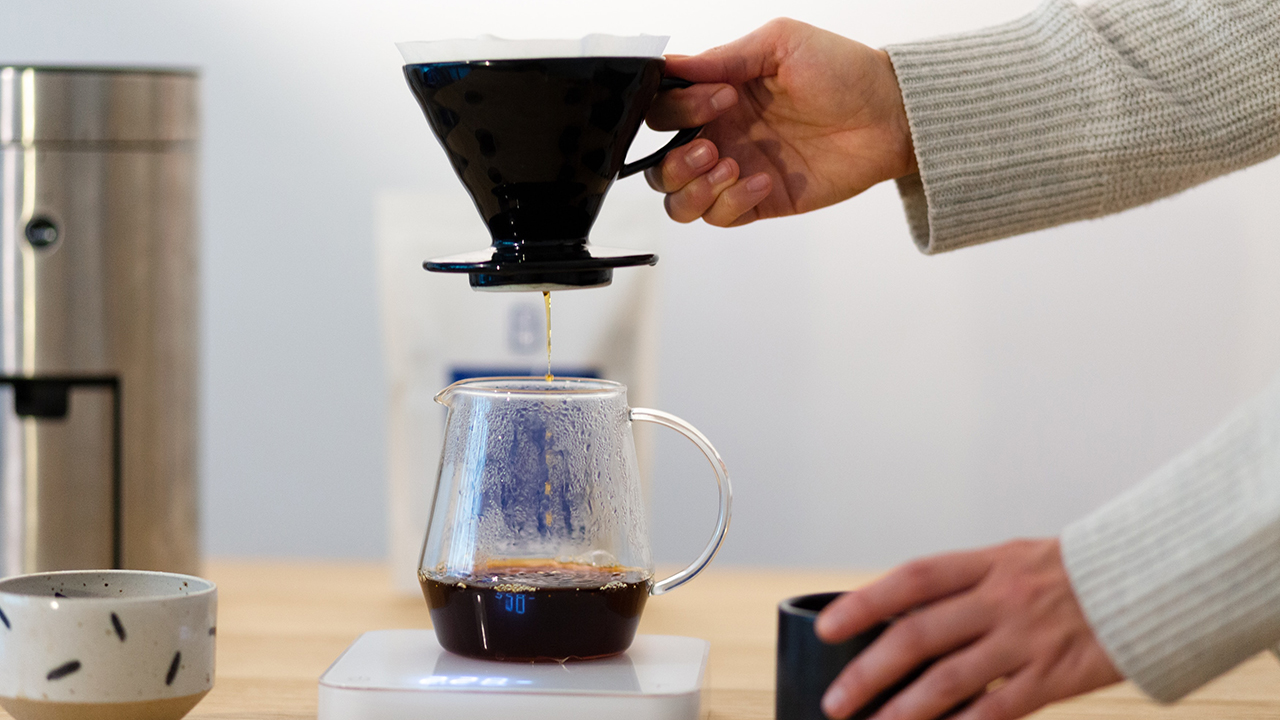
VARIETY: Name given to the type of coffee plant.
VARIETAL: Varieties of a single species of coffee.
VIENNA ROAST: Happens at the beginning of second crack, this is a dark roast and colour with a bittersweet flavour and smoky aroma.
VISCOSITY: A well-rounded and creamy mouthfeel caused by the coffee’s oils and sugars.
V60: This is a coffee dripping system made in Japan. It sits over your cup with a filter paper inside. It’s a handy and simple way of making a great cup of coffee when you’re working from home.
W
WASHED PROCESS: Washing the sticky mucilage off coffee beans and drying them in the sun. Also called wet mill.
X
XANTHAM GUM: A thickening agent secreted by the bacterium Xanthomonas campestris. It helps create frothy and creamy textures in your latte. (See this video)
Y

YEMEN COFFEE: Coming from small family plants in Yemen, these coffee plants grow without any chemicals and result in an earth flavour (sometime with dried fruit, cinnamon, chocolate or tobacco tones).
YIRGACHEFFE COFFEE: Coffee beans grown in Yirgacheffe (Southern Ethiopia) result in sweet, floral flavours and are best drunk black.
Z
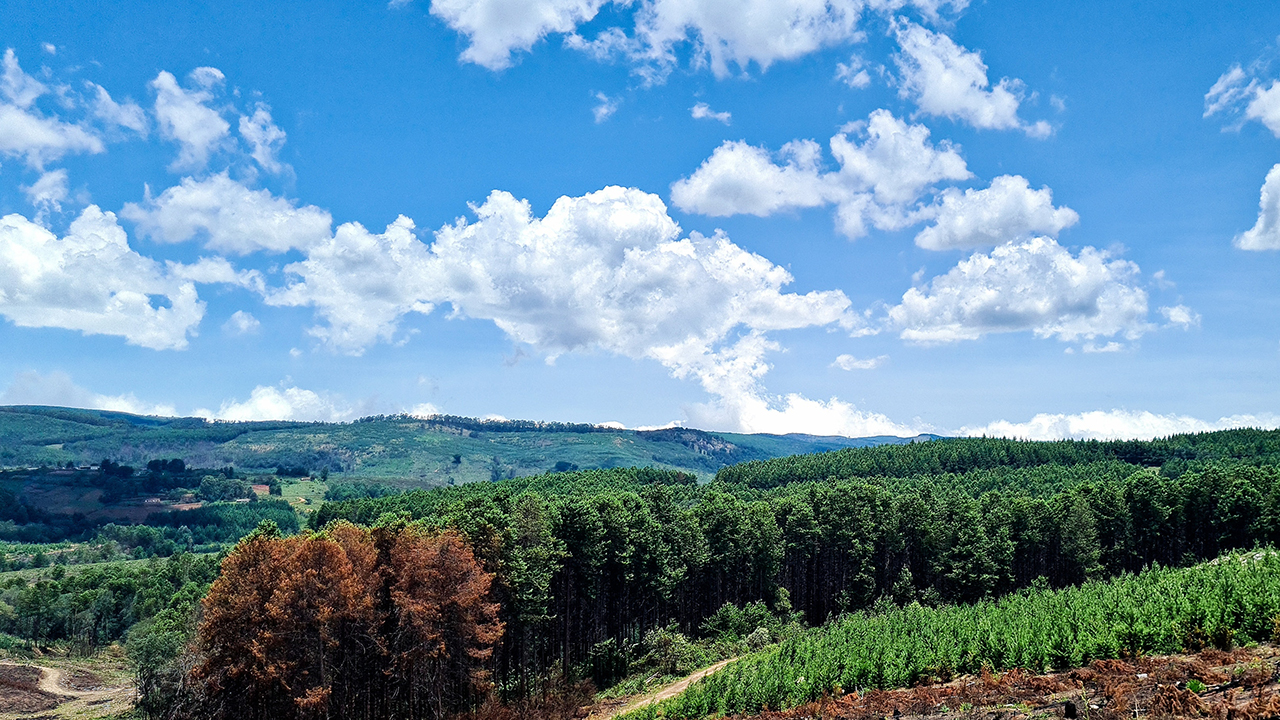
ZAMBIAN COFFEE: Grown in Zambia’s Northern Province (between 300m and 1600m above sea level), Zambia coffee produces a sweet acidity with melon and citrus flavours.
ZIMBABWE (CHIPINGE) COFFEE: Grown in Zimbabwe’s Chipinge region between May to September (and between 900m and 1100m metres above sea level), this medium-bodied coffee gives off sweet, citrus, chocolate and woody aromas. One of Africa’s finest coffees.
Get in touch?
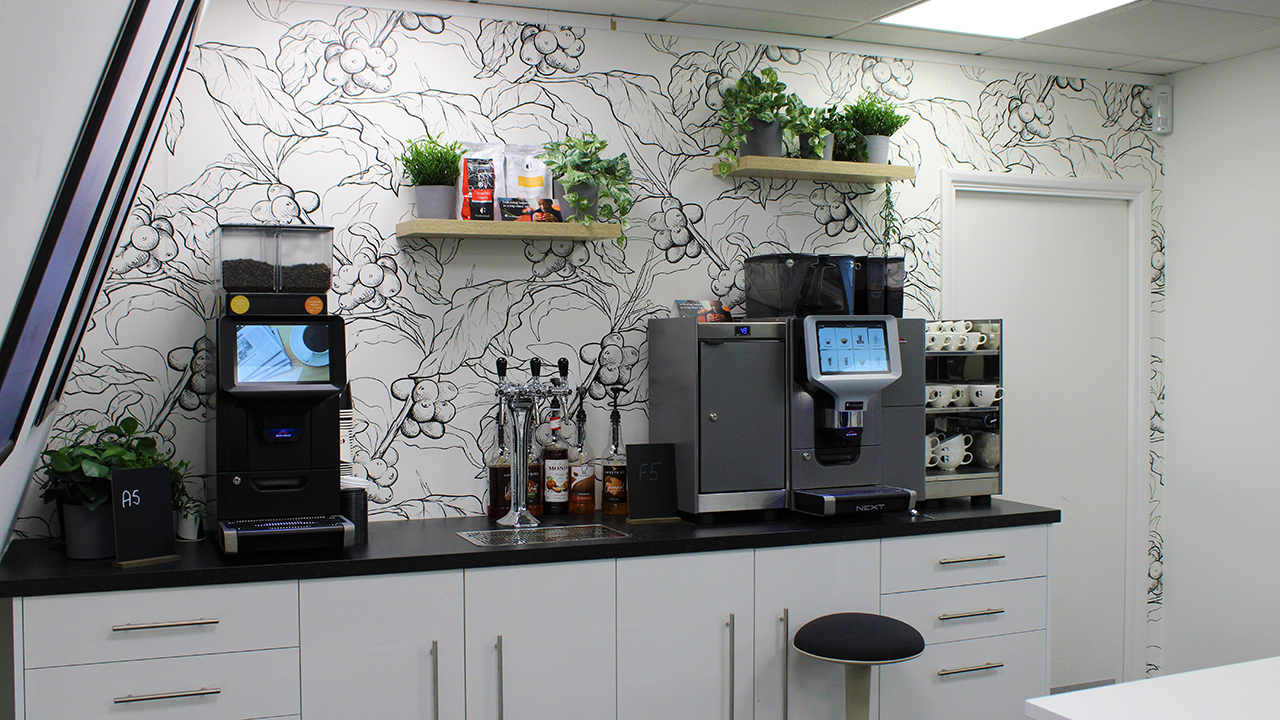
Thirsty for quality-coffee? Then contact us on hello@freshground.co.uk (email) and 020 7553 7900 (phone) to talk about getting exceptional coffee into your workplace.